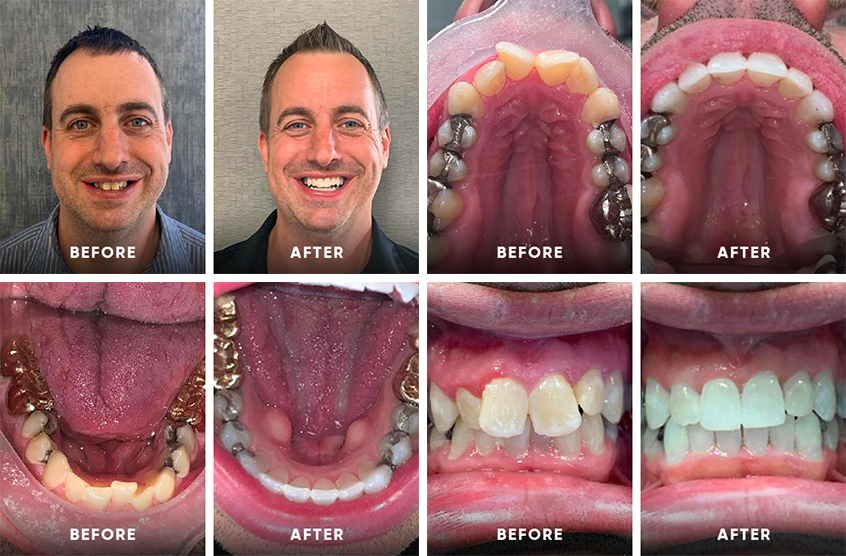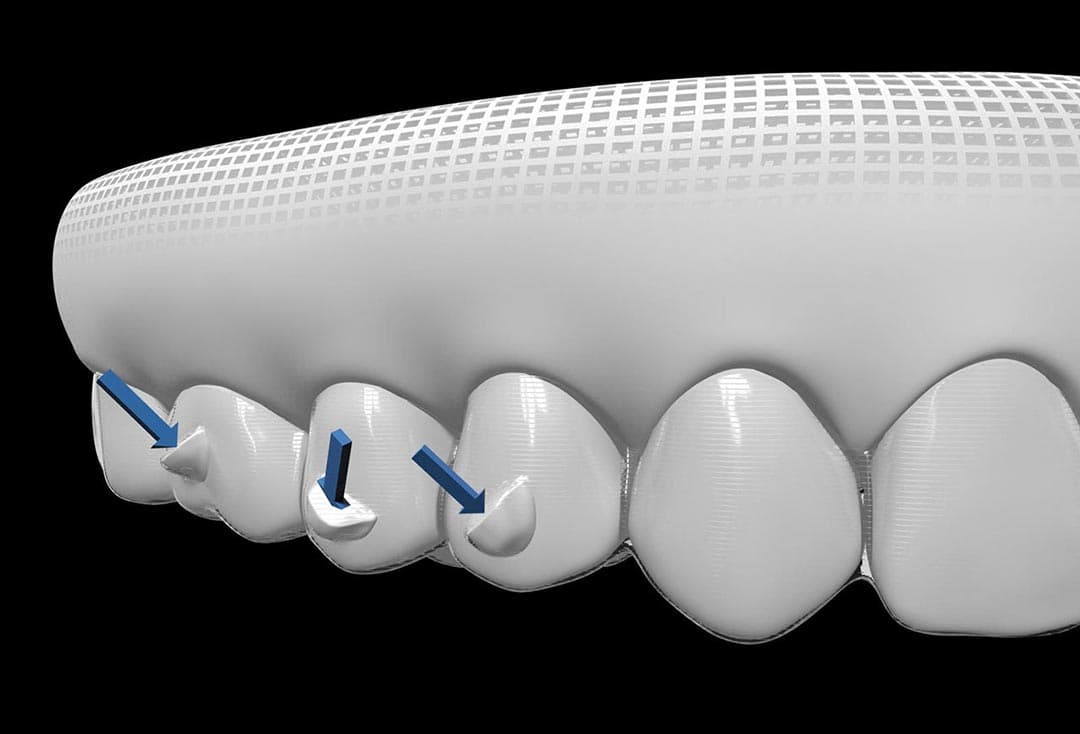Top Factors to Choose Invisalign Over Other Orthodontic Treatments
Top Factors to Choose Invisalign Over Other Orthodontic Treatments
Blog Article
Invisalign vs. Conventional Braces: Which Choice Is Right for You?
When considering orthodontic treatment, the selection in between Invisalign and typical dental braces provides several important variables that merit cautious assessment. Invisalign offers a discreet option with detachable aligners, while standard braces give a more noticeable yet effective option for serious imbalance. Each choice includes unique benefits and drawbacks connected to aesthetics, comfort, treatment period, and cost. Recognizing these subtleties is vital for making an educated choice that lines up with your personal choices and way of living. The concern continues to be: which alternative will ideal satisfy your orthodontic needs and expectations?
Introduction of Therapy Options

On the other hand, standard braces contain steel brackets and cables that are bonded to the teeth. This method applies continuous pressure over time to accomplish alignment. While effective for intricate orthodontic concerns, traditional braces call for regular sees for adjustments and can present obstacles in keeping oral hygiene because of the difficulty of cleaning up around brackets and wires.
Both options have their qualities, and the choice usually depends upon details dental problems, lifestyle choices, and client compliance. Eventually, speaking with an orthodontic professional is important for determining the most appropriate treatment strategy customized to individual needs. Understanding the subtleties of each option can significantly affect the general success of orthodontic treatment.
Visual Factors To Consider
A significant factor affecting the choice in between Invisalign and standard braces is the aesthetic allure each therapy uses. Invisalign aligners are crafted from clear plastic, making them essentially undetectable when used. This discreet look is particularly attracting teenagers and adults that might feel uncomfortable regarding their orthodontic therapy. The capacity to keep an all-natural smile throughout the positioning process can considerably improve the individual's confidence in professional and social setups.
On the other hand, traditional braces contain metal braces and cables, which can be more obvious. While improvements in orthodontic modern technology have actually caused the advancement of smaller sized braces and tinted elastics, standard dental braces still keep an even more noticeable profile. For some individuals, the visibility of braces may prevent them from looking for needed therapy.
Ultimately, the selection in between Invisalign and conventional braces may depend upon individual preferences pertaining to appearances. People who focus on discernment commonly lean toward Invisalign, while those who are much less concerned concerning visibility might opt for traditional braces. Comprehending the aesthetic implications of each option is critical for making an educated decision that straightens with one's way of living and choices.
Convenience and Convenience

In terms of benefit, Invisalign aligners are detachable, enabling people to appreciate their favored foods without constraint and keep ideal oral health. Brushing and flossing are simplified, as the aligners can be secured during these routines, whereas typical dental braces require click for info mindful navigating around brackets and cords.
Furthermore, Invisalign's progressive system permits fewer orthodontic sees. Patients usually get numerous collections of aligners at the same time, which can enhance the treatment procedure and decrease time invested in the orthodontist's chair. On the other hand, conventional dental braces demand routine modifications, making them much less hassle-free for those with hectic timetables. Invisalign. In general, the convenience and ease of Invisalign make it an appealing option for many individuals seeking orthodontic therapy.
Therapy Period and Effectiveness
While both Invisalign and typical braces work in correcting dental misalignments, the period of therapy can vary significantly in between both choices. Usually, Invisalign treatment can take anywhere from 12 to 18 months, depending on the complexity of the situation. The clear aligners work by slowly moving teeth right into their wanted settings, and regular follow-ups with an orthodontist assistance make certain progress continues to be on course.
In comparison, standard braces frequently require a longer commitment, typically ranging from 18 months to three years. This results from their set nature and using cords and braces, which can be more effective for serious imbalances and complex cases (Invisalign). The treatment performance of traditional dental braces is well-documented, as they permit precise adjustments and greater control over tooth movement
Ultimately, the choice between Invisalign and typical braces may pivot on both the awaited therapy duration and the specific oral problems at hand. Consulting with an orthodontist is crucial, as they can provide tailored recommendations based on specific requirements, making sure the selected approach straightens with wanted timeframes and results.
Expense Contrast and Insurance Options
Price plays a considerable function in the Homepage decision-making process for people thinking about orthodontic therapy, whether choosing Invisalign or conventional braces. On average, the cost of Invisalign ranges from $3,000 to $8,000, while traditional braces normally cost in between $2,000 and $6,000. Factors affecting these prices consist of the intricacy of the situation, the period of treatment, and geographical area.
Insurance policy protection can substantially affect out-of-pocket costs. Lots of oral insurance policy plans supply partial coverage for orthodontic therapies, but the specifics can differ commonly. It is vital for patients to assess their insurance coverage plans to figure out the degree of protection for either option. Normally, conventional dental important link braces might be a lot more often covered by insurance coverage strategies contrasted to Invisalign, which some insurance companies classify as a cosmetic procedure.
Additionally, numerous orthodontic practices provide adaptable layaway plan, making both therapy options more obtainable. Individuals must ask about potential funding alternatives and price cuts for upfront settlements. Reviewing the overall expense, including insurance coverage advantages and layaway plan, is necessary for making a notified choice that aligns with both visual choices and budget considerations.

Conclusion
In recap, the selection between Invisalign and standard braces pivots on several aspects, consisting of aesthetic choices, convenience, treatment period, and price. Invisalign offers a discreet, detachable option that assists in dental hygiene and dietary versatility, while typical dental braces may be preferable for complicated dental concerns and often come at a lower price factor. Ultimately, assessment with an orthodontist is vital to examine individual situations and establish the most ideal treatment option for achieving optimum dental positioning.
When considering orthodontic treatment, the selection in between Invisalign and traditional dental braces presents a number of essential factors that merit mindful analysis.Comparing Invisalign and traditional dental braces reveals distinct therapy options for orthodontic adjustment.While both Invisalign and standard dental braces are efficient in dealing with dental misalignments, the duration of therapy can vary considerably in between the 2 alternatives.Expense plays a significant duty in the decision-making process for individuals considering orthodontic therapy, whether opting for Invisalign or traditional dental braces.In recap, the option between Invisalign and standard braces hinges on several aspects, including visual preferences, convenience, therapy duration, and expense.
Report this page